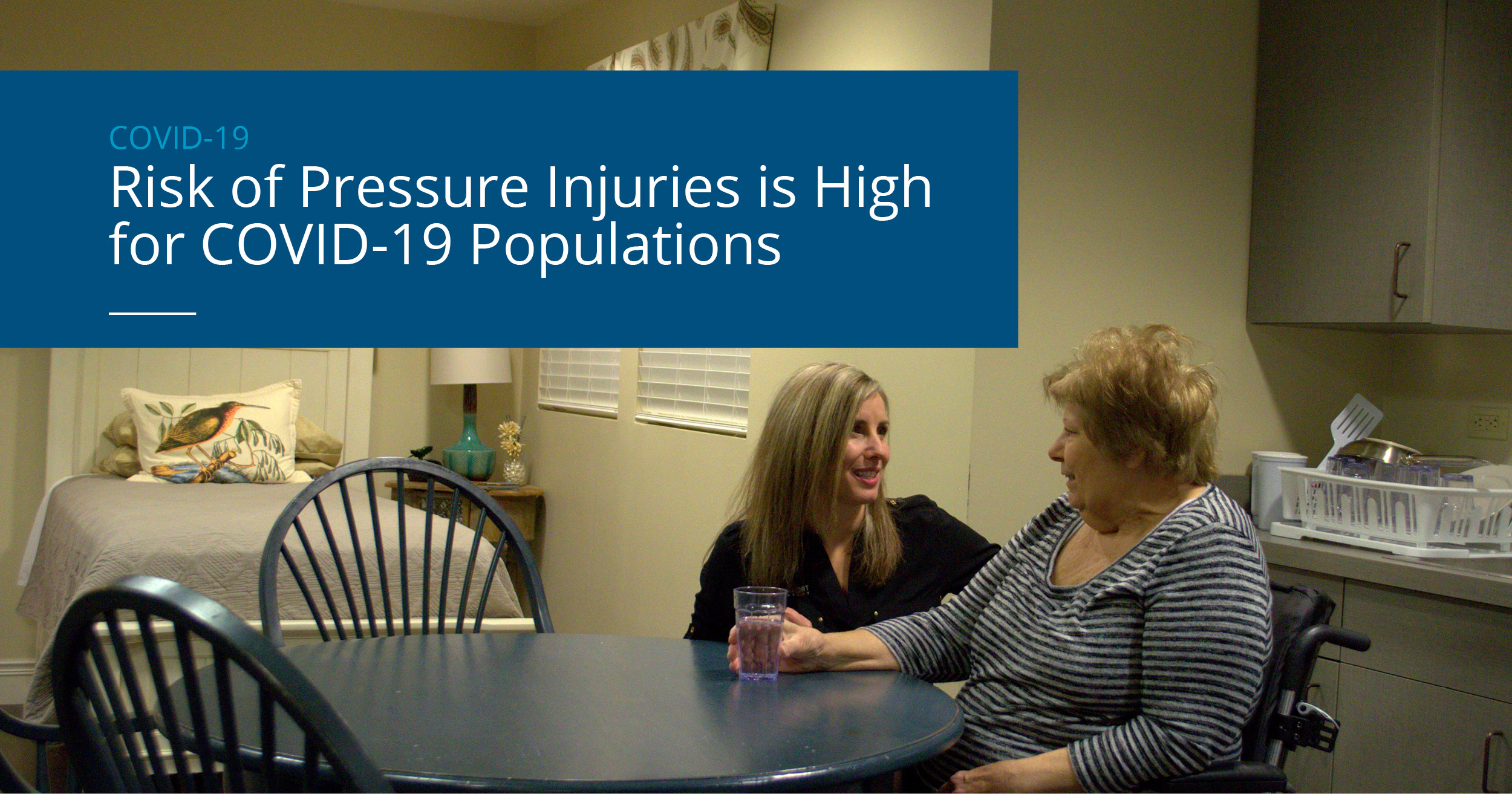The second blog in our series about dual protection in the pandemic: infection control and pressure injury prevention. See part 1, part 3, and part 4.
With the increasing number and varying conditions facing individuals affected with the COVID-19 virus, we must do all we can to protect them against pressure injury development.
The National Pressure Injury Advisory Panel (NPIAP), released a letter from the president on April 2, 2020, where she assured the community that, “Evidence-based standards of pressure injury prevention have not changed.” Even though human and material resources are strained in the face of COVID-19, our standard of care cannot falter.
Unfortunately, due to the impact of this virus, individuals are lying supine, prone, or sitting for longer periods of time due to illness or isolation. By being less mobile, they are at a higher risk for pressure injury development.
As stated in the introduction of 2019 Clinical Practice Guideline (CPG), “a number of contributing or compounding factors are associated with pressure injuries; the primary of which is impaired mobility.” The Guideline states other factors that increase pressure injury risk include:
- Alterations to skin status over pressure points (1.5)
- Pain at pressure points (1.6)
- Diabetes mellitus (1.7)
- Perfusion and circulation deficits (1.8)
- Oxygenation deficits (1.9)
- Impaired nutrition (1.10)
- Increased body temperature (1.12)
- Older age (1.13)
According to the CDC guidelines, the population at highest risk for serious complications due to the COVID-19 virus are:
- older adults aged 65 years or older
- people of any age with serious underlying medical conditions
Prevention is Key
Since the at-risk population affected by COVID-19 is also at high risk for pressure injury development, NOW is the time to prevent and manage pressure injuries. NOW more than ever, we should be looking for mattresses and seat cushions that meet the NPIAP clinical guidelines.
Two important NPIAP product recommendations are:
- Select a support surface that meets the individual’s need for pressure redistribution based on the following factors:
- Level of immobility and inactivity
- Need to influence microclimate and shear reduction
- Size and weight of the individual
- Number, severity and location of existing pressure injuries
- Risk for developing new pressure injuries (7.1)
- Consider using a reactive air mattress or overlay for individuals at risk for developing pressure injuries. (7.5)
As you can see, support surfaces specifically designed with skin protection properties should be used with individuals affected by COVID-19.
Last week’s blog highlighted the importance of using non-porous mattress overlays and cushions that can be easily cleaned and disinfected. These products must also protect the skin from pressure injury. By combining both of these protections, the facility will be reducing the risks of infection and pressure injury, as recommended by both the CDC and NPIAP.
The Solution is AIR
Air-filled products, when made of non-porous materials that also immerse and envelop the body, can:
- Reduce the spread of infection when cleaned and disinfected according to the CDC guidelines*:
- Be cleaned using a detergent or soap and water prior to disinfection
- Be disinfected by using either of the following:
- Diluted household bleach solutions (at least 1000ppm sodium hypochlorite)
- Common EPA-registered household disinfectants
- Reduce the risk of pressure injuries
Permobil has both mattress overlays and seat cushion solutions that can help! Please stay tuned for the upcoming blogs on the PRODIGY mattress overlay and Permobil’s many seating options!
*It is important to note that as the knowledge of this virus grows, guidelines can evolve. Today’s discussion is referencing information from April 2, 2020. Please visit this site regularly for any updates: https://www.cdc.gov/coronavirus/2019-ncov/php/eh-practitioners/sprayers.html
European Pressure Ulcer Advisory Panel, National Pressure Injury Advisory Panel and Pan Pacific Pressure Injury Alliance. Prevention and Treatment of Pressure Ulcers/Injuries: Clinical Practice Guideline. Emily Haesler (Ed.) EPUAP/NPIAP/PPPIA: 2019.
 Ana Endsjo, MOTR/L, CLT
Ana Endsjo, MOTR/L, CLT
National Education Manager - Long Term Care Division
Ana Endsjo has worked as an occupational therapist since 2001 in a variety of treatment settings. She has mainly worked with the geriatric population, dedicated to the betterment of the treatment of the elderly in long term care centers. Her focus has been on seating and positioning and contracture management of the nursing home resident. With this experience, her hope is to guide other therapists, rehab directors, nurses, and administrators through educational guides, blogs, webinars, and live courses in her role as National Education Manager - Long Term Care Division.

